Related Research Articles

Nadežda Petrović was a Serbian painter and one of the women war photography pioneers in the region. Considered Serbia's most famous expressionist and fauvist, she was the most important Serbian female painter of the period. Born in the town of Čačak, Petrović moved to Belgrade in her youth and attended the women's school of higher education there. Graduating in 1891, she taught there for a period beginning in 1893 before moving to Munich to study with Slovenian artist Anton Ažbe. Between 1901 and 1912, she exhibited her work in many cities throughout Europe.

The Pavle Beljanski Memorial Collection is a public art museum in Novi Sad, Serbia. It displays paintings and sculptures by 20th century Serbian and Yugoslav artists, mostly from the interwar period. The collection bears the name of its founder and contributor Pavle Beljanski, Serbian diplomat and art collector, who donated his collection of paintings, sculptures and tapestries to the Serbian people in November 1957. He continued to add works of art to this significant collection until his death. The collection consists of 185 works by 37 artists. The Pavle Beljanski Memorial Collection was opened to the public on 22 October 1961.

The Museum of Natural History is a museum located in Belgrade, Serbia. It is one of the oldest specialized national institutions in Serbia, and is the only museum of this type in Serbia.
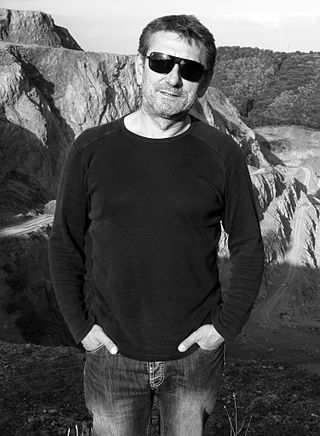
Slobodan Peladić was a Serbian painter, sculptor and multimedia artist.
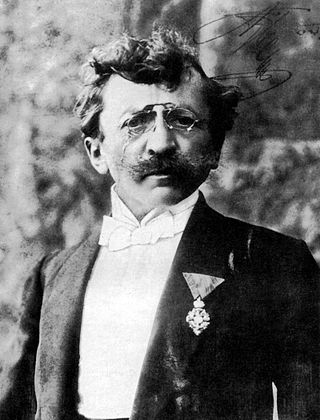
Anton Ažbe was a Slovene realist painter and teacher of painting. Ažbe, crippled since birth and orphaned at the age of 8, learned painting as an apprentice to Janez Wolf and at the Academies in Vienna and Munich. At the age of 30 Ažbe founded his own school of painting in Munich that became a popular attraction for Eastern European students. Ažbe trained the "big four" Slovenian impressionists, a whole generation of Russian painters and Serbian painters Nadežda Petrović, Beta Vukanović, Ljubomir Ivanović, Borivoje Stevanović, Kosta Miličević, and Milan Milovanović.
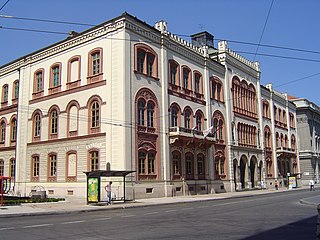
The Mansion of Miša Anastasijević is one of the most notable buildings in Belgrade, Serbia. It is the University of Belgrade's administration and governance building.
Ljubomir "Ljuba" Ivanović was a Serbian painter, printmaker and draughtsman. He is considered one of the first Serbian impressionists, although he found his way of expression through graphic means.

House of Dimitrije Živadinović is located in Belgrade, in the territory of the city municipality of Stari Grad. It was built in 1904 and represents immovable cultural property as a сultural monument.

"Stanković" Music School in Belgrade, founded in 1911, under the auspices of King Peter I, as a musical and teaching institution. It is one of the oldest educational institutions in Belgrade. When it was established, it operated within the Choral Society "Stanković". It was named after the Serbian composer, and pianist Kornelije Stanković who was the first to introduce harmonics of the Serbian root and spiritual compositions.
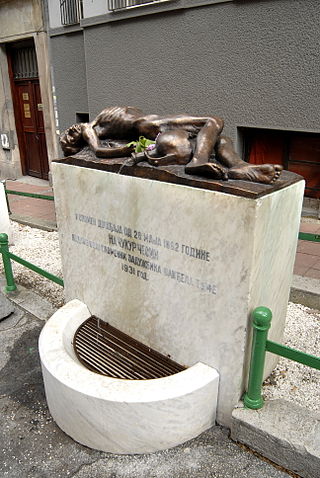
The Čukur Fountain incident refers to a series of events in June 1862 in Belgrade, at the time the capital of the Ottoman subject state of Serbia. On 15 June a group of Ottoman nizami (soldiers) and Serbs quarreled by the Čukur Fountain, ending with a wounded Serb apprentice boy, which resulted in civil unrest and the bombardment of Belgrade by Ottoman troops. In the wake of the incident, a Great Power brokered conference was held in Constantinople which resulted in a reduction of Turkish citizens and troops on Serbian soil.

Ana Marinković was a well-known Serbian artist from the turn of the century until the outbreak of World War II. She has paintings housed in the permanent collections of the Belgrade City Museum, the Museum of Contemporary Art in Belgrade, the National Museum of Serbia, and other locations both in Serbia and abroad.

Kosta Miličević was a Serbian Impressionist painter, known mostly for his landscapes.

Milan Milovanović was a Serbian Impressionist painter and art teacher.
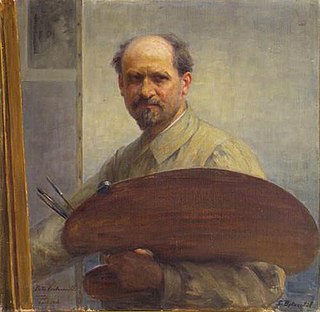
Rista Vukanović also Risto Vukanović was a Serbian painter, the husband of painter Beta Vukanović who together founded an art school at the turn of the century that produced a generation of young Serbian artists after the Great War.
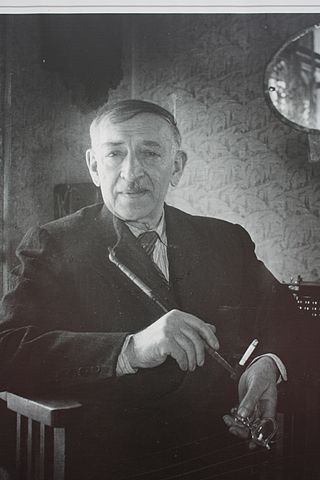
Rista Marjanović, the first Serbian photo-reporter, author of photographs from the Balkan Wars, World War I and World War II.
Nikola Milojević was one of the most prolific Serbian portraitists of his generation. He was also a popular Belgrade studio photographer, a representative of academic realism of the 19th century along with many of his colleagues.
Lazar D. Lazarević was a Serbian Army general and chief of the Corps Department Active Army Commands. He also served as the 13th Dean of the Academic Board of the Military Academy (1901-1904).
Nikola Begović was a priest, religious teacher, poet and historian.
Grigorije Ivanovič Samojlov(Russian Cyrillic: Григорий Иванович Самойлов; Taganrog, Imperial Russia, 8 September 1904 - Belgrade, Serbia, Yugoslavia, 15 October 1989) was a Russian architect, designer and painter who lived and worked in Serbia. He was one of the many academically trained Russian émigrés who after settling in Serbia contributed the architectural landscape of the Kingdom of Serbs, Croats and Slovenes. He built in the spirit of academism, Serbo-Byzantine style, modernism and art deco. He distinguished himself not only with his high skills in designing various types of building, from monumental public buildings to family houses, but also as the author of some of the most beautiful interiors of Belgrade palaces of this period. Also, he painted the likenesses of King Alexander I of Yugoslavia, and scientist Milutin Milanković among the most notable, as well as teaching the art of design and painting.
Dimitrije Posniković was a Serbian iconographer and painter from the 19th century. A student of Dimitrije Avramović, with whom he sometimes collaborated on commissions, Posniković mainly painted icons and frescoes for churches in Serbia.
References
- 1 2 Лијескић 2008.
- 1 2 3 4 Паштрнакова 2005, pp. 136.
- 1 2 3 4 Паштрнакова 2011, pp. 457.
- ↑ Паштрнакова 2005, pp. 142.
- ↑ Milojković-Djurić, Jelena (January 1, 1988). Tradition and Avant-Garde: Literature and Art in Serbian Culture, 1900-1918. East European Monographs, Boulder. ISBN 9780880331319 – via Google Books.
- ↑ Паштрнакова 2005, pp. 143.
- ↑ Miljković, Ljubica (April 15, 2000). Despite the bombing. Narodni muzej. ISBN 9788672690484 – via Google Books.
- ↑ Dejová, Iva (2009). "Kiril Kutlik i František Nekvasil - zaboravljena imena iz kulturne istorije Smedereva".
- ↑ Паштрнакова 2005, pp. 149.
- ↑ Паштрнакова 2005, pp. 150.
- ↑ Jovanov, Jasna M. "Kiril Kutlik i počeci moderne umetnosti u Srbiji/Cyril Kutlík and Early Modernism in Serbia" – via www.academia.edu.
Works cited
- Лијескић, Биљана (13 December 2008). "У Србији има талената". Полирик онлјн. Retrieved 11 September 2016.
- Паштрнакова, Ива (2005). "Кирил Кутлик, оснивач Српске цртачко-сликарскешколе и његово дело у Србији" (PDF). Годишњак града Београда. Београд: Музеј града Београда. LII. Retrieved 12 September 2016.[ permanent dead link ]
- Паштрнакова, Ива (2011). Чедомир Попов (ed.). Српски биографски речник 5 (Кв-Мао)). Нови Сад: Библиотека Матице српске. ISBN 978-86-7946-085-1.